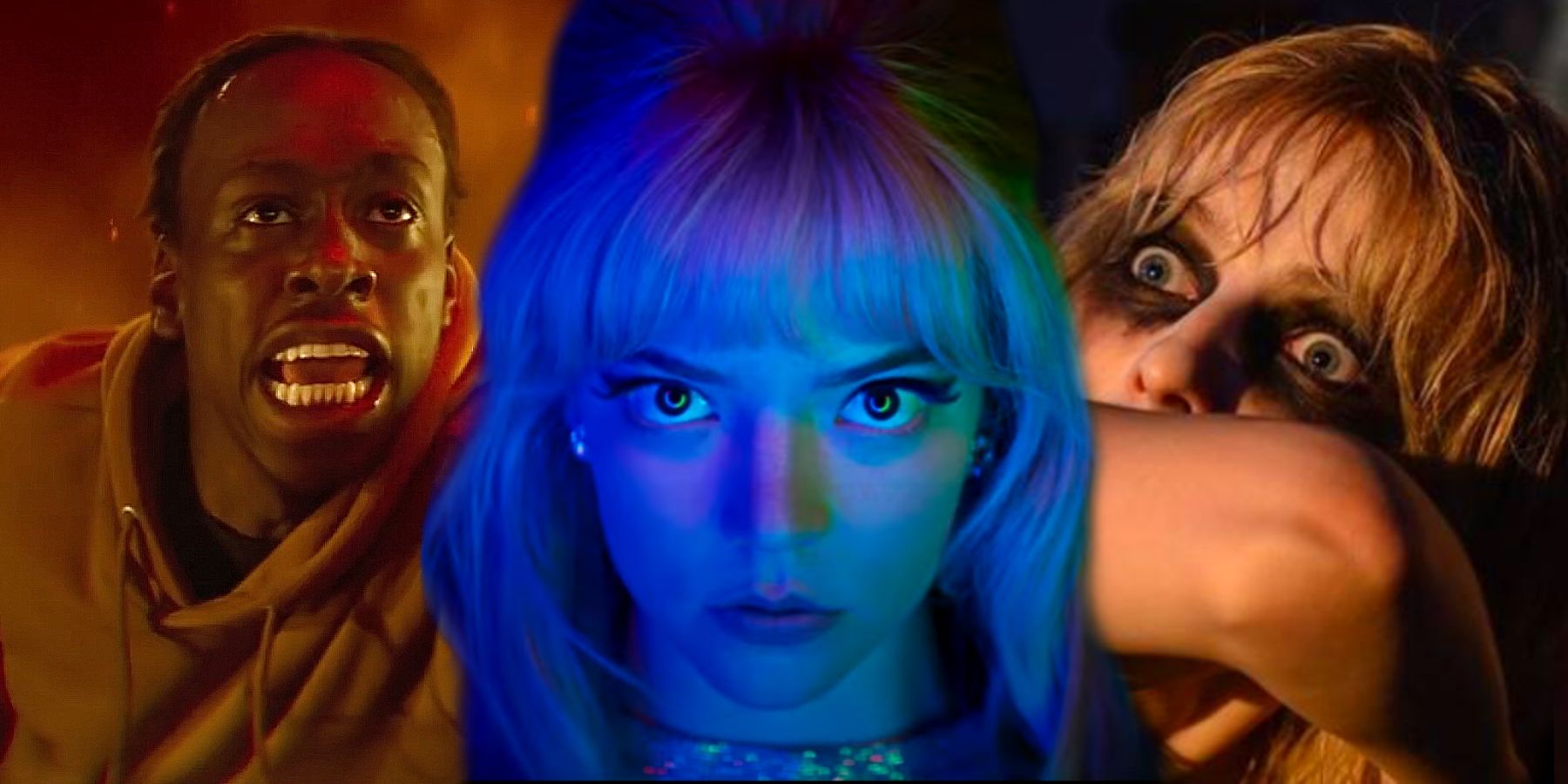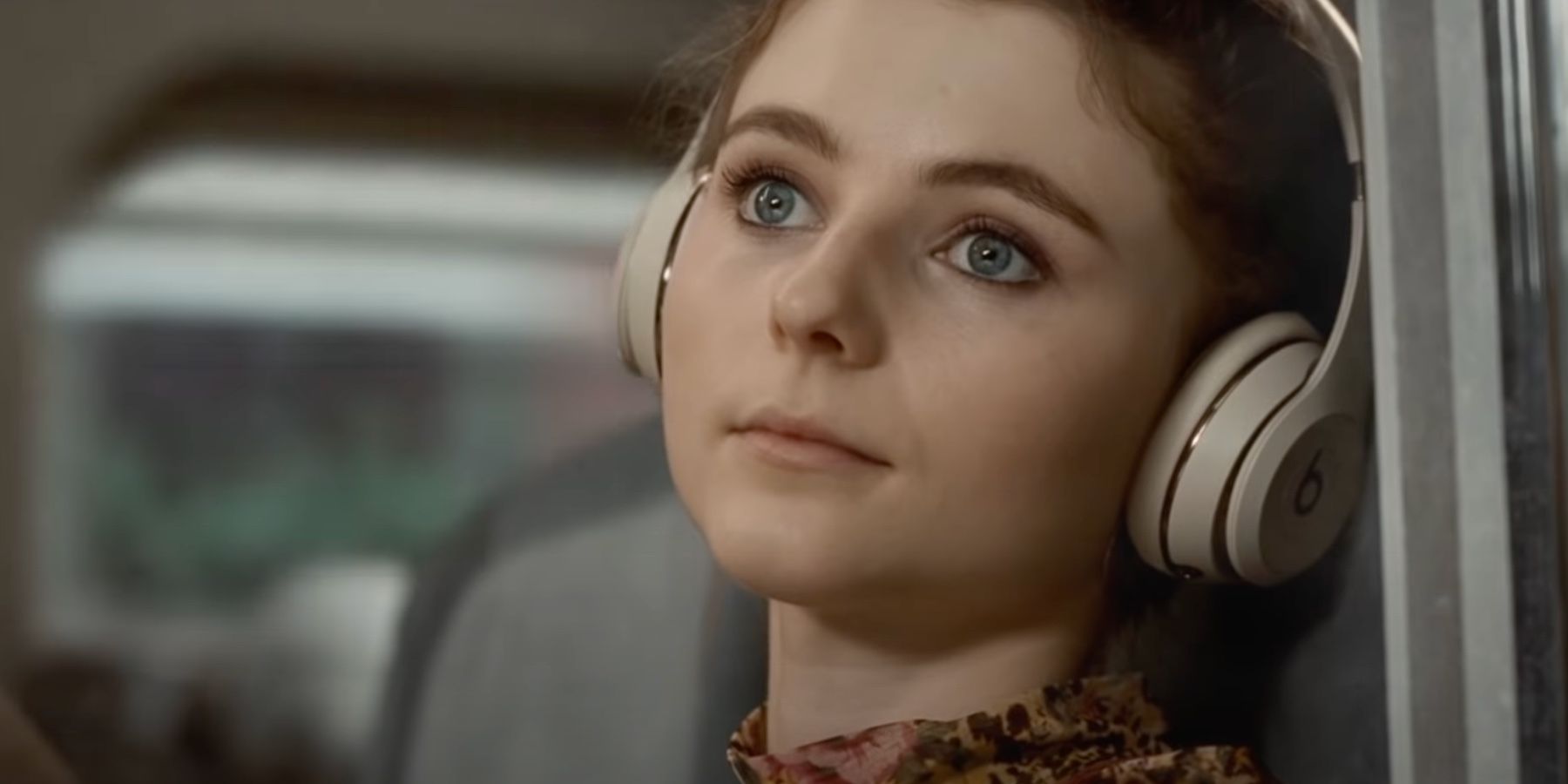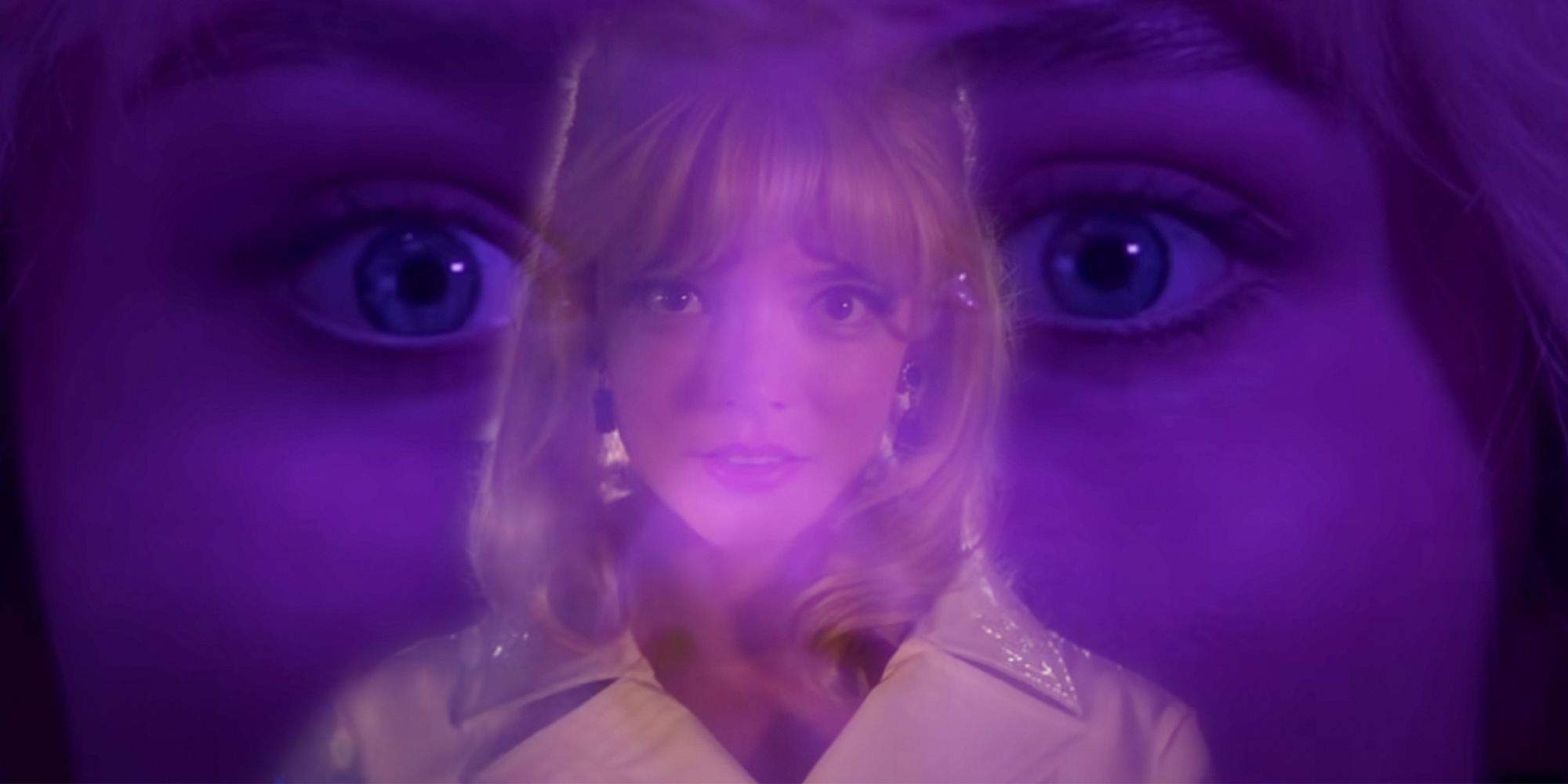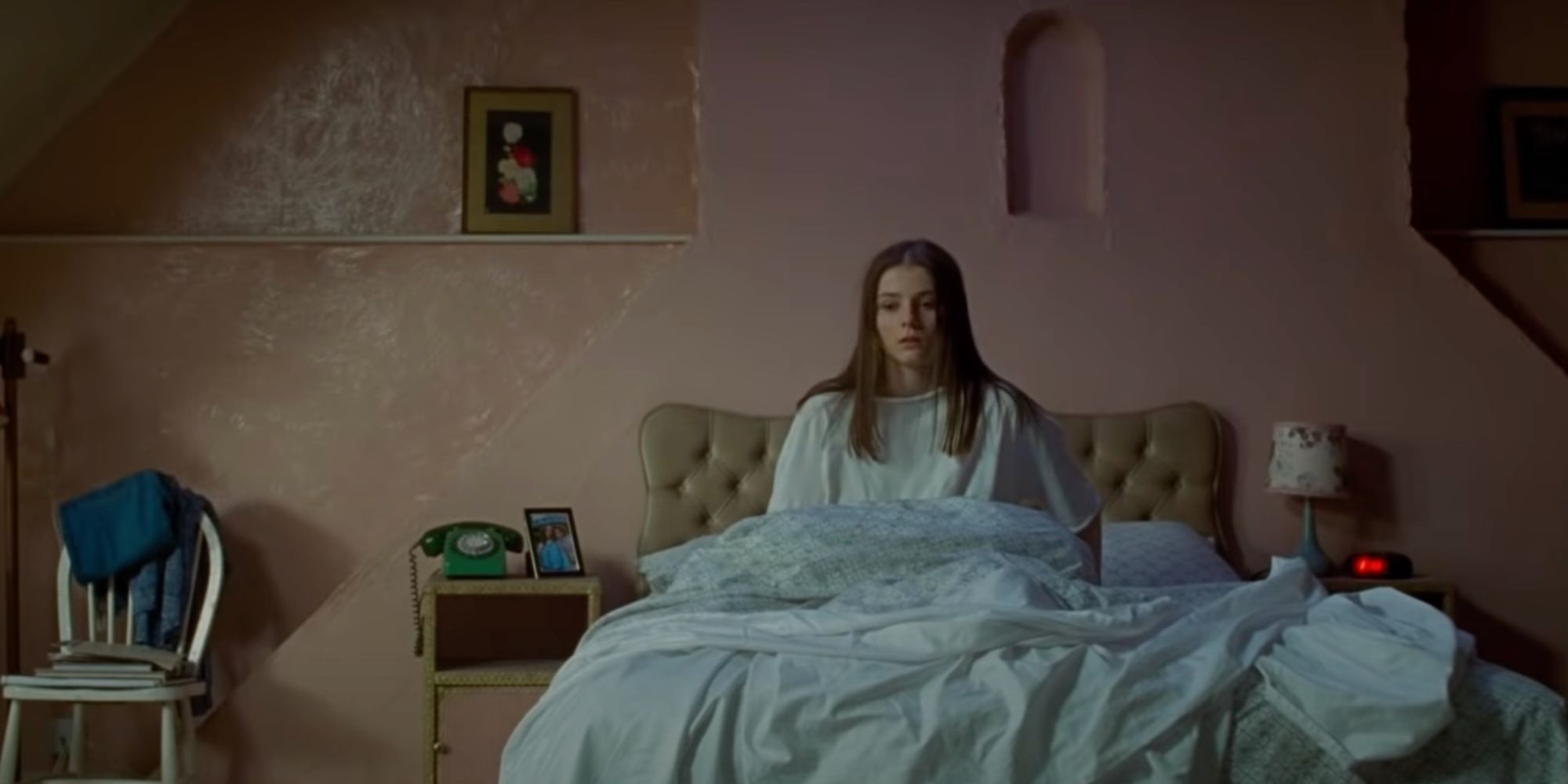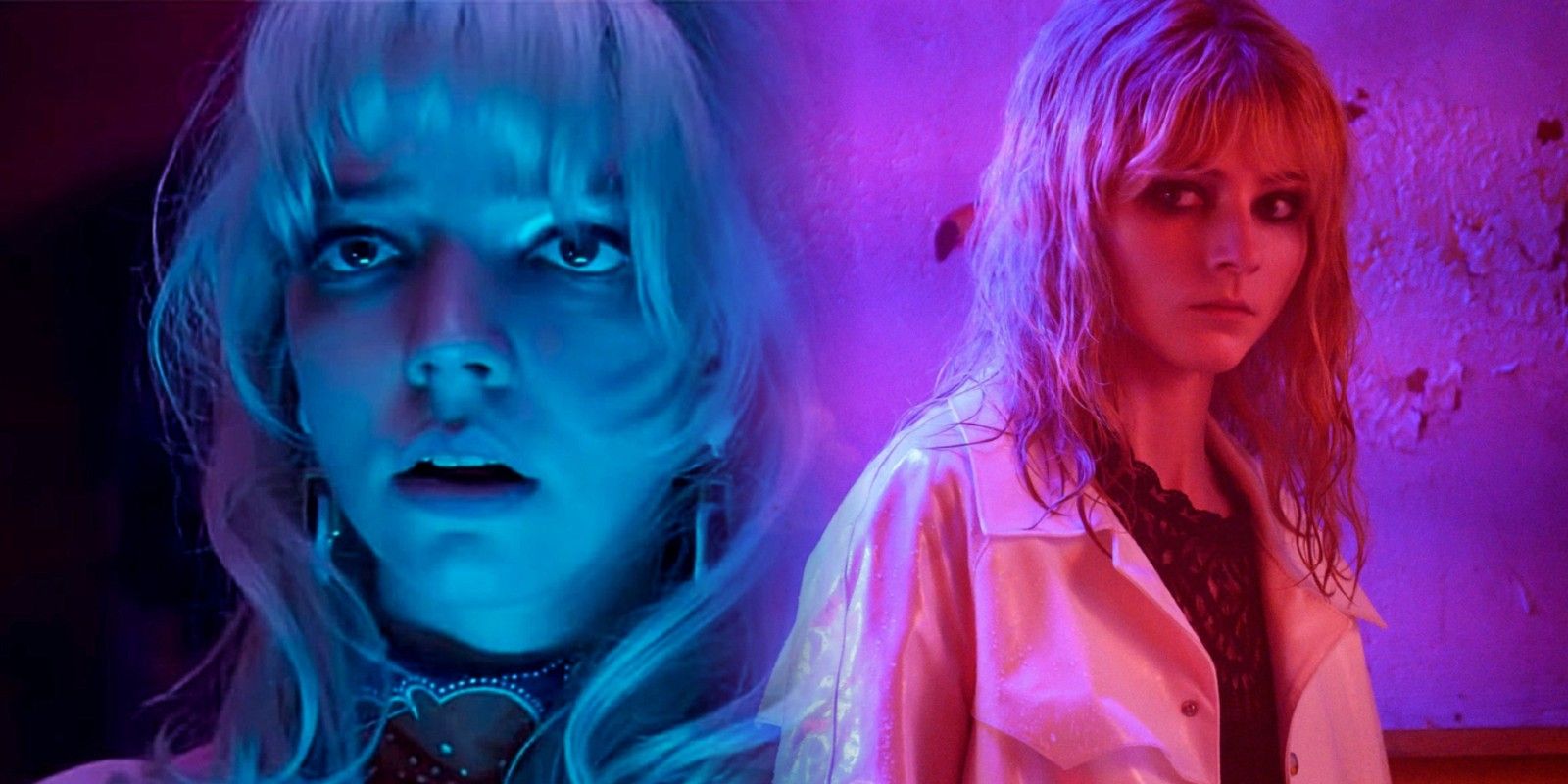Warning: SPOILERS for Last Night in Soho!
Although met with generally favorable reviews from critics and audiences alike, Last Night in Soho contains several plot holes and unanswered questions. Director Edgar Wright’s psychological thriller is about new London fashion student Eloise "Ellie" Turner (Thomasin McKenzie), whose unique housing choice results in the ability to enter 1960s Soho each evening.
Through these nighttime expeditions into the past, Ellie is connected to an entrancing young woman named Sandie (Anya Taylor-Joy), who aspires to become a famous singer in the London nightclub scene. The details about how and why Ellie is connected to Sandie, however, are never made entirely clear. Although Last Night in Soho is richly designed and dripping with atmosphere, a lack of clearly established rules and questionable character choices could make repeat viewings problematic.
It is possible this was a deliberate choice, especially given Wright’s favorite horror movies include several UK psychological thrillers and an iconic Italian Giallo, films often associated with elements of confusion and ambiguity. Intentional or not, Last Night in Soho raises many unanswered questions by the time the credits roll. Here's a look into those plot holes and headscratchers.
Is Ellie A Participant Or Viewer?
When Ellie is first transported to the 1960s, she appears to be sharing the same body as Sandie, with her own reflection appearing in mirrors where the aspiring singer should be. There are even implications that Ellie’s own physical body is affected by what happens in the 1960s when a hickey appears on the young designer’s neck the day after Sandie has a make-out session with the deceptively charming talent manager, Jack (Matt Smith). However, as Last Night in Soho flashbacks to the 1960s multiple times, a shift occurs in which Ellie is no longer directly connected to Sandie. Although still tied to the events occurring to the singer, Ellie does not always share Sandie’s body. In one sequence, she is an audience member watching Sandie dance onstage, while previous scenes show Ellie sharing the experience of performing. If there is a reason why Ellie sometimes shares a body with Sandie and other times appears to be no more than an unseen visitor to the past, Last Night in Soho offers no explanation.
Is It Time Travel Or A Ghost Story?
The basic premise of the film revolves around Ellie’s ability to witness 1960s London firsthand. Still, Wright never establishes whether this is accomplished through time travel or if she merely sees ghostly visions of the past. Before Last Night in Soho's twist ending reveals otherwise, Ellie suspects events in the past resulted in Sandie’s death and that her connection to the singer is a ghostly cry for help in exposing the killer. When Ellie is visited by actual spirits of murdered victims in the film’s climax, the possibility that Sandie is a ghost seeking retribution is eliminated when it is revealed that Ellie’s elderly landlady is actually an aged Sandie (Diana Rigg). A local retired police officer named Lindsay (Terence Stamp) is also still alive, despite his younger self (played by Sam Claflin) appearing in Ellie’s visions of the 1960s.
If the visions of the past are not ghostly, it is possible to read the events as a passive form of time travel, though that leads to several other unanswered questions. Last Night in Soho's ending sets up a sequel that could possibly resolve some of these inconsistencies, but they aren't addressed in this film. For instance, if it is time travel, what is the reason for the occurrence? More specifically, why does it occur to Ellie? Is it merely a coincidence that a girl obsessed with the 1960s is transported to that exact period? Then there is the manner in which Ellie travels back in time and the unanswered questions regarding what specifically is being used as a portal to the past.
What Is The Portal To The Past?
Given that Ellie often appears as Sandie’s mirror image, along with the fact that she occasionally catches glimpses of her deceased mother in reflections throughout the film, it would make sense for mirrors to serve as portals to the past. While it may not be among Edgar Wright's best movies, Last Night in Soho contains an impressive amount of mirror imagery. There is even an antique piece of furniture in Ellie’s room containing a mirror, but its accidental destruction one night eliminates the possibility of this being the source of the gateway. Often Ellie merely walks through a doorway to enter the 1960s, though the logic of this is also inconsistent. Sometimes she opens a closet door and is transported directly into a nightclub, while other times, she exits the front door of the home and finds herself on the streets of 1960 without inexplicably changing locations.
The room Ellie rents from the aged Sandie could actually be the portal, as well as the location of Last Night in Soho's scariest and most violent scenes. This would explain how characters from the past are able to enter Ellie’s room at night, just as she can exit into the 1960s. This answer seems to make the most sense, especially when it is revealed that Sandie has filled the walls with the bodies of victims from the past. What makes less sense is the ghostly apparitions’ ability to contact Ellie when she is outside of the room, whether in a classroom or at a Halloween party. It is possible that Ellie can see ghosts that are separate from the time portal, which would explain the appearance of her mother throughout the film.
Why Is John So Trusting Of Ellie?
John (Michael Ajao) plays an important character in Last Night in Soho as a supportive classmate and romantic partner for Ellie but lacks plausible motivations for the level of trust given. When Ellie invites John to her room late one evening, ghostly apparitions interrupt their romance and result in a panic attack the landlady mistakenly assumes to be John’s fault. John is forced to flee, breaking Ellie’s antique mirror in the process. Not only is there no mention of the injuries John sustained from the mirror’s broken glass, but he seems unphased by the dramatic events when approaching Ellie in the library the following day. Even after Ellie nearly stabs a fellow classmate in the face with a pair of scissors, John never questions his love interest’s state of mind. Given the fact that Ellie has a history of mental illness in her family, this seems particularly unwise.
Who Is Last Night In Soho's Villain?
The twist ending seems to be the primary reason Last Night in Soho's reviews are so mixed spends much of the run-time setting up Sandie as a victim of Jack and the various men he pimps her out to, capitalizing on her desire for fame to motivate participation in the objectification. However, when it is revealed that Sandie killed each of these men in retaliation, she becomes the villain in an attempt to keep her crimes a secret by killing Ellie and John. When the ghosts of the male victims appear, asking Ellie for assistance in revenge, the young designer refuses and even stops Sandie from taking her own life.
Before leaving Sandie to die in the burning home, Ellie sympathizes with her landlord’s decision to kill the men from her past, despite the woman’s attempts to murder her moments earlier. The illogical ending full of twists could be another reason to assume Wright intended Last Night in Soho as a Giallo revival. Sandie’s sudden shift from victim to villain and back to victim again is especially jarring given the fact that it occurs within a 15-minute period. Last Night in Soho obviously has something to say about victimhood and female empowerment, but the convoluted ending makes it unclear exactly what that is.

